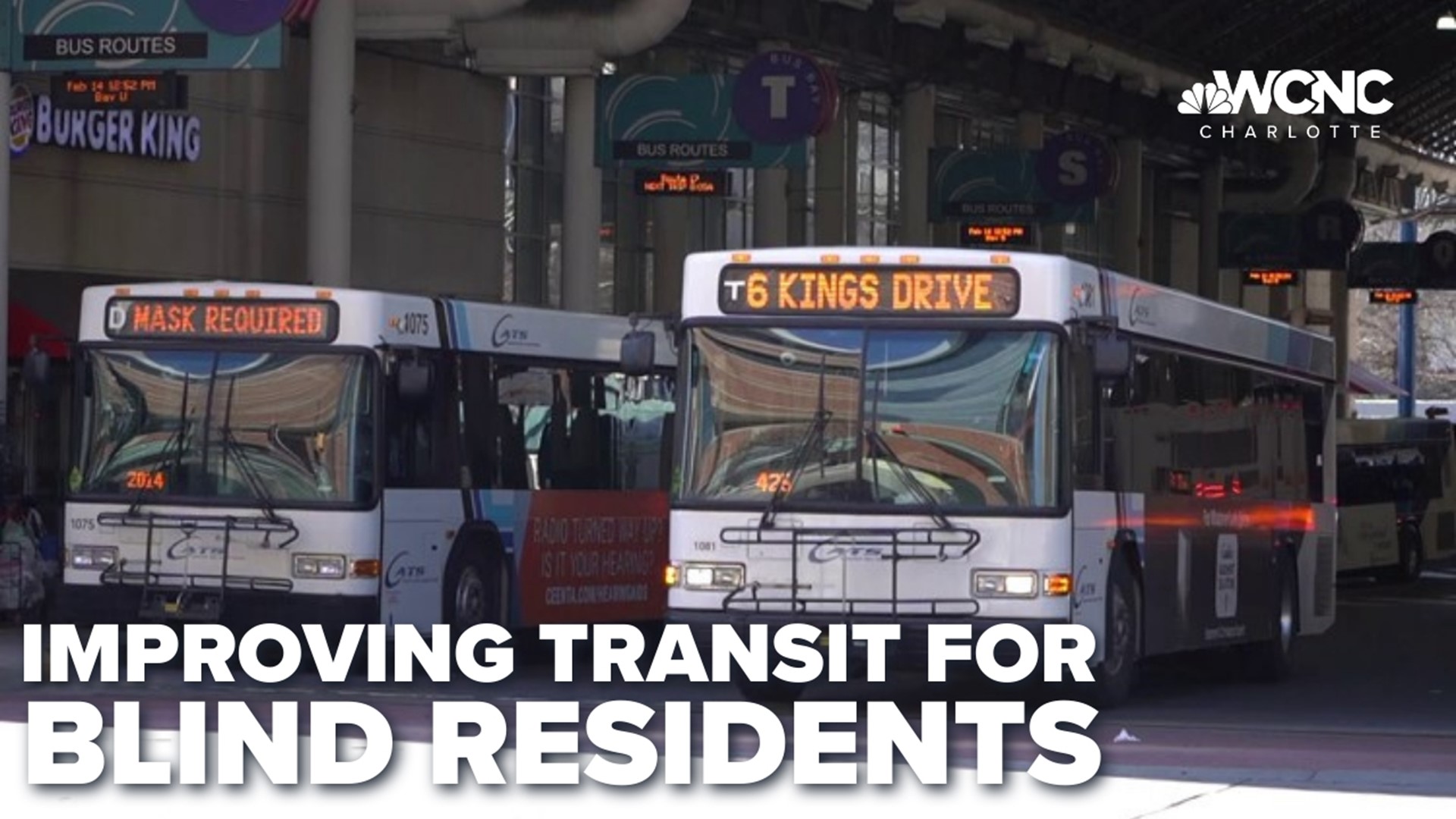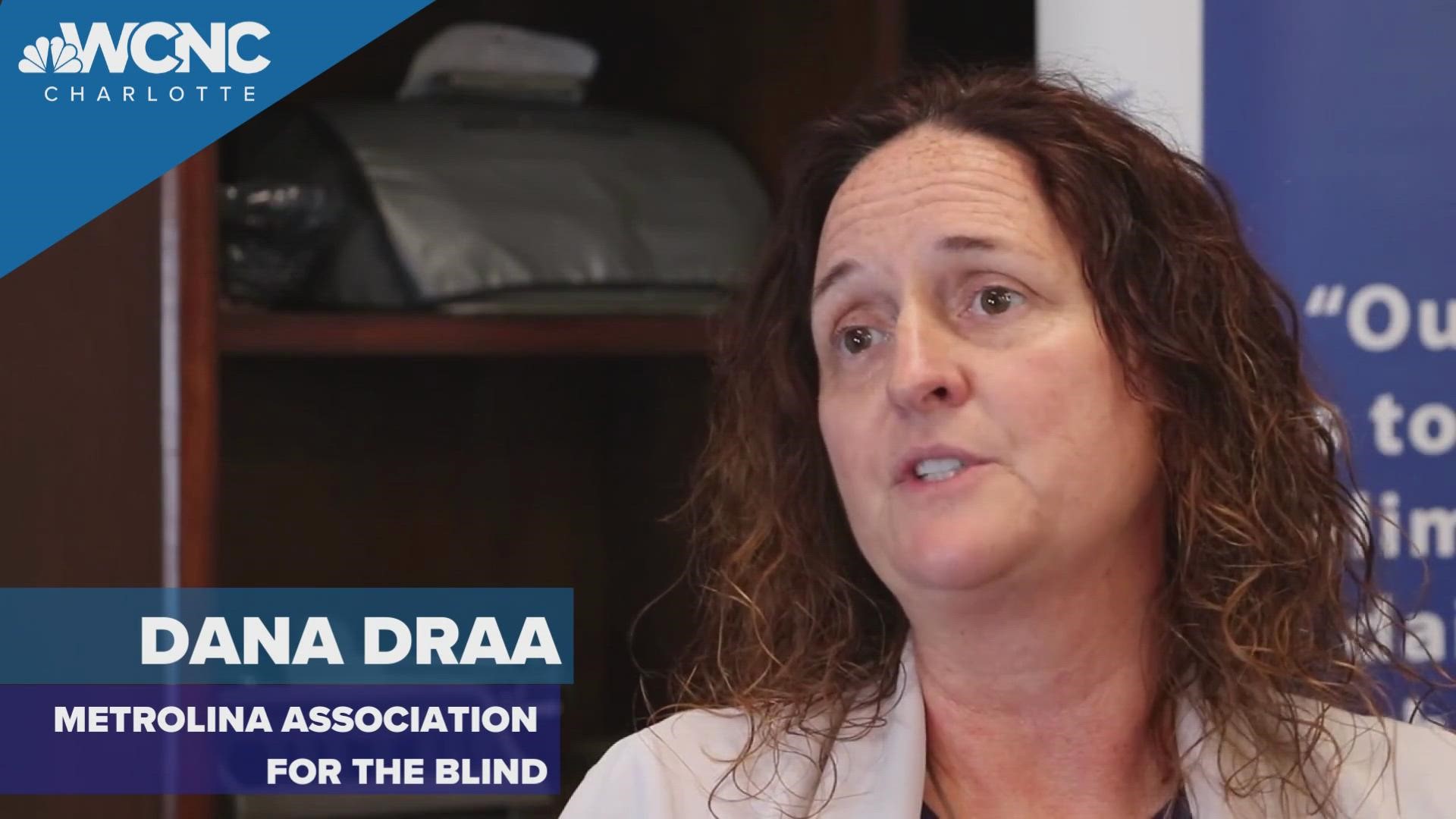CHARLOTTE, N.C. — In recent months, the Charlotte Area Transit System (CATS) has been hit with staffing shortages. Several days saw late buses because drivers had called out or were on paid time off. That’s led to regular riders questioning the system and if it can get people to work and other destinations on time.
But another element of the system has seen ripple effects as well. And it impacts Charlotte’s residents who can’t drive themselves because they are blind or live with low vision.
As part of the requirements laid out in the Americans with Disabilities Act (ADA), CATS offers a para-transit service called the Special Transit Service (STS). Residents who live with physical, visual, or cognitive disabilities can apply for STS vans to pick them up and take them to where they need to go. They reserve with the service, and a van is expected to come right to their homes for the trip.
PREVIOUS COVERAGE: Where are all the workers? CATS struggling with staffing issues
But there is a big catch: residents who do qualify for STS have to be picked up within a ¾-mile radius of a service area. That means STS will only pick up residents within that radius near a CATS bus stop or LYNX light rail station.
Brad Blair has lived in Charlotte for more than a year, moving to the area from Chicago with his seeing-eye dog Velcro. He was born at 26 weeks old in 1983 and was blinded during incubation. He’s needed accommodation for all his life, but much of his time in school as a child saw him having to make do.
“I didn’t have much access to computer training with screen readers to read,” he said,” until my last year of high school.”
Now, he’s able to help other blind and low-vision people just like him at the Metrolina Association for the Blind as one of its instructors. But he still sees plenty of gaps to be filled in Charlotte, including with accommodations in public transit.
“As a running joke, when I meet someone from New York City who just moved here, I tell them ‘welcome to the rest of America,’” he said. “If you don’t drive in the United States of America, your ability to access the environment – whether in your community or outside of it – is going to be limited and it’s going to be more difficult.”
Blair cited several trips he needed to take that fall just outside of the STS service area. It meant he had to hail a ride with Uber or Lyft. Sometimes, Blair claims the rideshare drivers would decline his ride once they saw Velcro, allegedly claiming he didn’t have a face mask and got his rider profile flagged.
“It happens to me fairly frequently. And I report it every time because the platform needs to know,” he said.
Those denials, coupled with STS vans often running late, means Blair has been late to appointments or had to put off errands. And he’s not alone; John Lish came to the Queen City from New York City in 2010 as his vision kept declining because of glaucoma. He said fellow blind and low-vision friends in Charlotte have had similar issues, ranging from a driver shortage to sometimes being just outside of the STS service area.
“I have friends who ride STS that can only ride a certain distance, and then they have to have somebody come pick them up or take a cab or Lyft to go further to their home,” Lish said. “Why can’t the bus pick us up where we live, or where we’re at?”
Lish lives within a half-mile of the nearest CATS bus stop, so service range isn’t his biggest hurdle. Rather, it’s time; if the STS van is late, it means he clocks in late to work. And without more time, it means Lish can’t get out of the house more often.
“I want to get up and go do things,” he said. “But then I have to set aside time. And then if you set aside a block of time to go do what you want to do or need to do, you still have to put extra time to that, to account for STS not coming on time.”
Lish told WCNC Charlotte that all makes simple tasks like grocery shopping much more difficult and time-consuming, forcing him to set aside upwards of three to four hours for that alone.
Dana Draa, Chief Program Officer at the MAB, agrees that more can be done for people like Lish and her co-worker Blair. The MAB itself does offer door-to-door transportation for clients but wants to work with Charlotte city leaders on making sure public transportation options are accessible for all beyond the ADA minimum radius.
“We have individuals here in Charlotte that are on the periphery or that live outside of that three-quarters of a mile range that really just can’t access STS,” she said. “Listening to their stories is important because you can see just day-to-day kind of activities can be a struggle for them.”
Chiefly, Draa believes expanding the STS service radius would be a major benefit for Charlotteans who need door-to-door pickup. She also wants to ensure the mobile phone app is accessible, something she says MAB is partnering with CATS on. Another thing Draa believes would be critical: ensuring disabled residents have a voice in key decisions. While she isn’t blind or low-vision herself, boosting the voices of the people she works with is close a priority.
“One of the things I think would be a real big boon for our community is to have a council for individuals with disabilities,” she said, “because at the end of the day I want to create space for our clients to tell their stories.”
Draa said there’s precedent for a disability advisory council, and believes Charlotte can expand the STS service radius similar to what the city of West Palm Beach, Florida has done by partnering with different agencies to get door-to-door pickup service to more people. Another comparable city is Indianapolis, Indiana; the IndyGo system is also managed by RATP, which manages CATS. A statement on the IndyGo website states “Although federal regulation requires service with only ¾ of a mile, IndyGo Access operates throughout all of Marion County, seven days a week and with the same hours as local service”.
WCNC Charlotte asked a spokesperson from CATS to discuss possible changes to the STS service radius. The representative said while STS service is staying at the ¾-mile radius for now, CATS has received inquiries about expanding it. CATS also said the Mecklenburg Transportation System (MTS) provides service for customers outside of the STS radius, and that options from providers like Shepherd’s Center of Charlotte and PACE of the Southern Piedmont are discussed with STS applicants who are seniors.
Contact Julia Kauffman at jkauffman@wcnc.com and follow her on Facebook, Twitter and Instagram.


